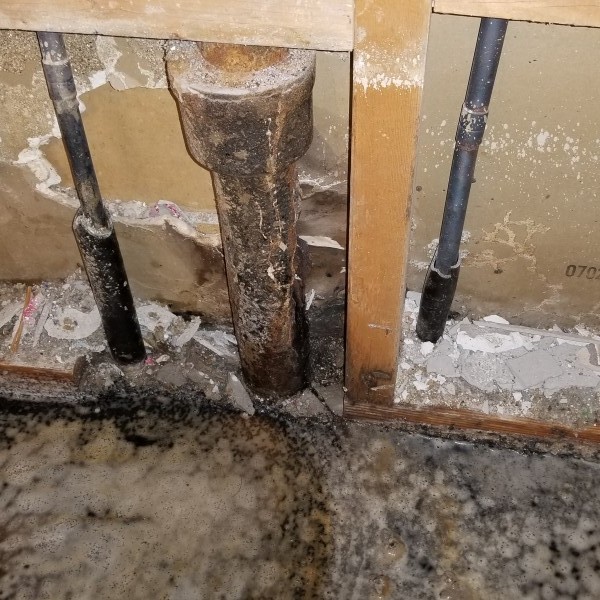This post down below in relation to Looking for Signs of Water Damage in the Bathroom is exceedingly insightful. Don't miss it.

The shower room is extremely susceptible for wet accumulation as well as potential water damages as a result of the frequent use of water in it. This post offers easy assessment strategies to help discovering water damages hazards.
The regular use of water in the restroom makes it very at risk for moist build-up as well as possible water damages. By inspecting it routinely, you can minimize water relevant problems.
The following set of examinations is easy to perform as well as must be done when in every 3 months in order to maintain your washroom in good shape and to prevent prospective water damages triggered by the bathtub, the shower, pipe joints and plumbing, sinks, cupboards, as well as the bathroom
Do not disregard doing these examinations and also be detailed while performing them. Keep in mind that these simple inspections can save you a great deal of cash by supplying very early indicators for water damages
Sinks as well as Cabinets
Sinks as well as cupboards are subjected to wetness as well as humidity everyday and are frequently forgotten. Evaluate on a regular basis under the sink and also on the kitchen counter over it. Repair any drip in the trap as it may recommend drainpipe troubles. Browse the sink, sluggish draining pipes may show an obstructed drainpipe. Replace sink seals if they are broken or loose.
Bathtub and also Shower
The shower and also tub need special focus and also maintenance. Check the tiles and also change if broken. Ensure that there is no missing cement in between the ceramic tiles. Inspect and also change broken caulking at joints where the walls satisfy the floor or the bathtub. Obstructed drains pipes as well as pipes troubles will prevent the bath tub from drying out as well as may show major troubles underneath the bathtub. Consult with a specialist right away to prevent architectural damage. Pay attention to stainings or soft areas around the bathtub wall surfaces as they may show an inner leakage.
Plumbing
Signs for water damage are tough to discover since the majority of pipes are mounted inside the walls.
Pay unique interest to flooring as well as walls dampness and also spots as they might suggest an invisible plumbing issue. Check dampness levels in adjacent rooms too.
The Toilet
The commode is a susceptible water joint. Examine the water lines and look for leaks around the commode seat, in the tube, and under the water container. If you spot any kind of signs of wetness on the floor around the bathroom, look for leaks in the toilet rim as well as tank seals.
Know that hanging commode bowl antiperspirants increases the possibilities for obstructions.
Water Damage Signs In The Bathroom To Avoid Cleanup
Musty smell
This is one of the easiest signs to catch because musty smells are so odorous. The damp, earthy, moldy smell should be a big red flag. The smell will develop when moisture gets trapped in surfaces, and begins to facilitate mold growth. Leaking pipes under cabinets, inside walls, and behind shower fixtures will cause moisture to stay trapped and not dry, which will lead to mold growth and spread. As soon as you notice any musty smells in your bathroom, have it checked for hidden water damage and cleanup signs.
Visible mold
If the smell isn’t there to give it away, sometimes you will actually see mold growth. Finding mold in your bathroom is a serious problem, because mold is very harmful to your health. By the time mold growth is visible, it also means that water damage has already occurred and been present for some time. The only way the mold problem can be resolved is to find the source of the moisture and get it stopped. To safely and adequately remove mold, you need to have professionals handle the remediation. Do not waste any time in getting mold problems addressed, fixed, and sanitized so that you can protect you and your family from the many respiratory symptoms caused by mold exposure.
Damaged floors
Bathroom floors should be able to withstand some exposure to water while still remaining in good condition. However, when excess exposure or water leaks occur, they will begin to damage even the most water-resistant flooring. If you notice any cracking, bubbling, staining, or warping on your bathroom floors, there is probably a water leak somewhere causing the distortion. If you notice areas of the floor have become softer, or even have a spongy feeling, there is probably damage to the subfloor. Subflooring is typically made up of plywood. When plywood is exposed to water or moisture, it will absorb it. Once it has become saturated, the weight of the excess water will cause the wood to swell and soften. Check the floors in your bathroom frequently to catch any of these sings before they lead to damaged subflooring.
Changes on walls
When water leaks behind walls, it will cause changes in the drywall. Peeling plaster, blistering paint, and soggy wallpaper are all good indicators that excess water is building up behind the wall. Water leaking behind drywall will cause it to swell and be soft to the tough. If you start to notice gaps along the trim of your walls, or where tile meets the wall, it could also be a strong indicator that there is a leak behind the wall. Any changes, distortion, or damage on the walls should be evaluated as soon as you notice it to prevent further water damage and cleanup.

As an enthusiastic reader about Looking for Signs of Water Damage in the Bathroom, I think sharing that chunk was a smart idea. For those who enjoyed reading our blog entry plz do not forget to pass it around. I cherish reading our article about Preventing Water Damage in the Bathroom.
Schedule Your Service